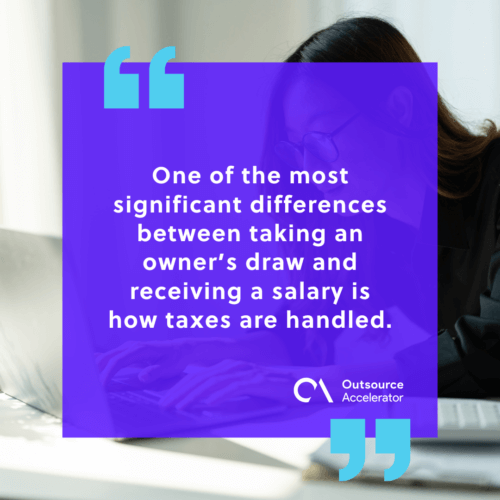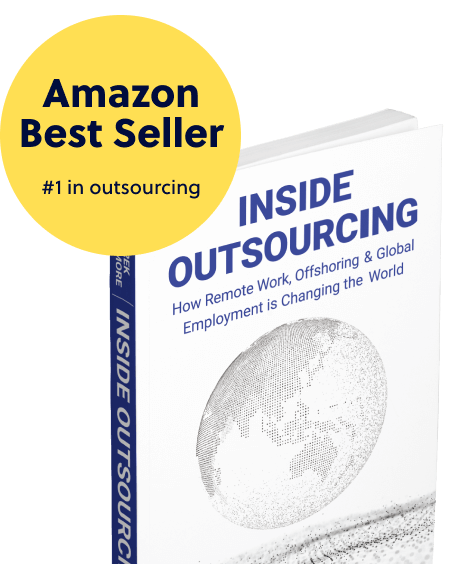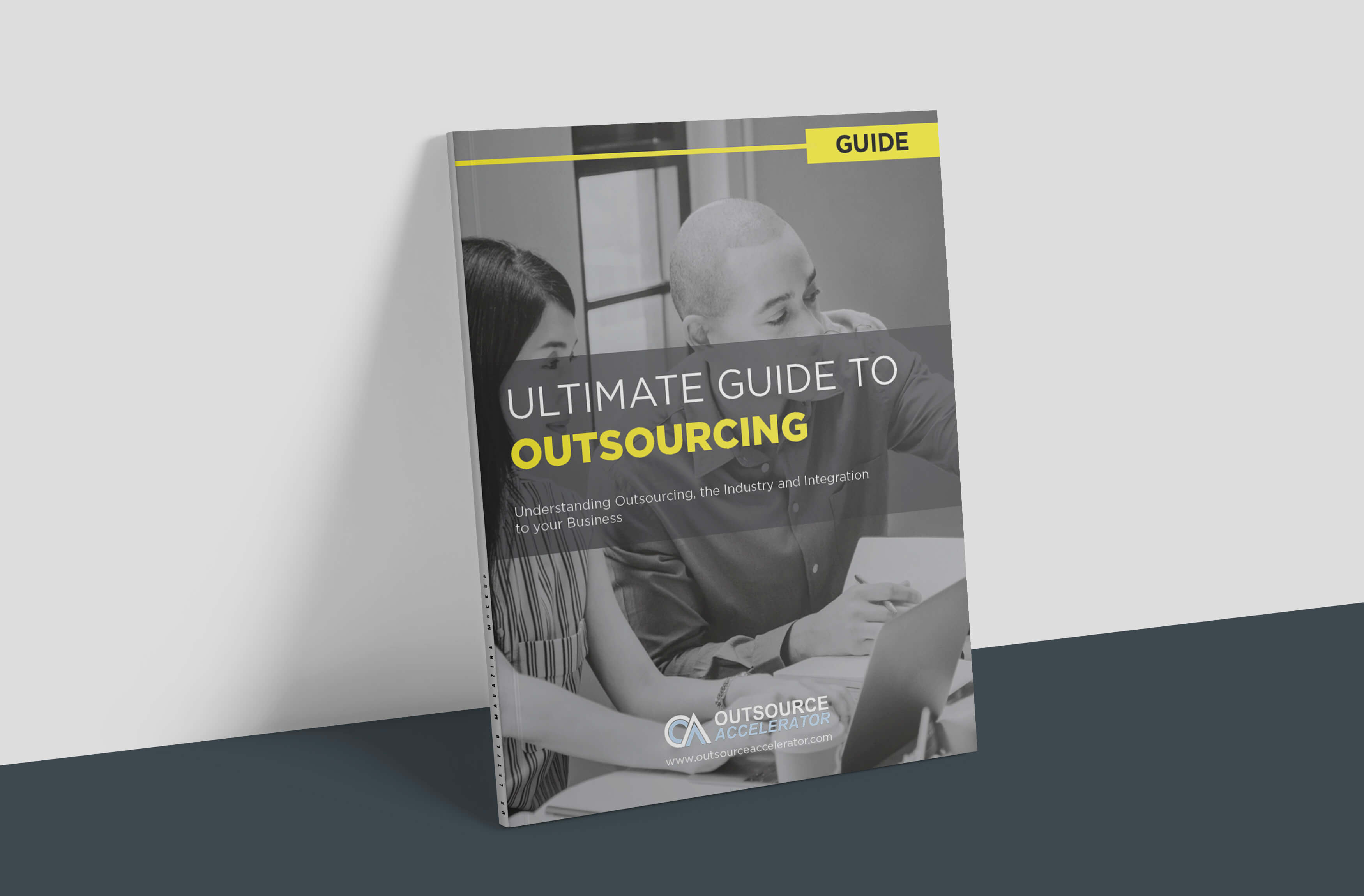Owner’s draw vs. Salary: Paying yourself as a business owner

Paying yourself as a business owner can be challenging because it requires balancing business stability, growth, and personal financial needs.
There’s also a psychological aspect. Some owners feel guilty about taking money out of the business, especially in its early stages. However, compensating fairly is essential for long-term sustainability, which ensures personal financial security and business success.
We’re here to help you understand how to pay yourself as a founder using the owner’s draw method and how it differs from taking a salary.
Owner’s draw vs. Salary method
Paying yourself isn’t just about taking money from your business account and calling it a day. How you do it affects your taxes, financial flexibility, and whether your business stays on the right side of the law.
Learning the differences between various payment methods ensures you get paid without harming your business’s cash flow.
Let’s define the owner’s draw and salary methods.
What is an owner’s draw?
An owner’s draw lets you withdraw funds from your business profits for personal use. It’s not a fixed salary—you take money as needed. This flexibility makes it ideal for business owners who want control over how and when they pay themselves.
However, careful planning is crucial to avoid withdrawing too much and leaving your business without enough capital.
Owner’s draws are common in sole proprietorships, partnerships, and LLCs where owners are not classified as employees. While this approach keeps things simple, you’re responsible for managing taxes since no automatic withholdings occur.

What is a salary method?
The salary method means paying yourself a fixed amount on a regular schedule, just like a traditional employee. Your business runs payroll, deducts taxes, and issues a paycheck.
This method is required for corporate owners and optional for LLCs that elect to be taxed as corporations. Receiving a salary provides stability and simplifies tax management since income and payroll taxes are automatically deducted.
While this approach ensures a steady paycheck, the business must maintain a consistent cash flow to cover payroll expenses.
Can you use both owner’s draw and salary method?
Yes, you can use both salary and owner’s draw. However, it depends on your business structure. S corporations, for example, commonly use this approach to avoid double taxation by passing income and losses to shareholders.
In an S corporation, owners must first take a reasonable salary based on their role, which includes tax withholdings.
After that, they can withdraw extra profits (owner’s draw) that are not subject to payroll taxes.
Further, balancing salary and distributions is essential. Taking too little as a salary can raise red flags with the IRS, while too much can strain the business’s revenue stream.
It is advisable for business owners to work with a tax professional to ensure they follow legal requirements.
How much can you draw for yourself?
The amount you can take as an owner’s draw depends on how much profit your business generates.
Let’s say your business earns $120,000 in annual profit after all expenses, including rent, payroll, and utilities. You estimate that your business needs 40% of profits ($48,000) to cover future expenses, reinvestments, and unexpected costs.
In this case, you could reasonably draw up to $72,000 over the year while keeping your business financially stable.
If you need $6,000 per month for personal expenses, you could take $4,000 as a regular draw and $2,000 as a reserve draw to avoid draining business funds too quickly.
| Annual profit | Working capital (40%) | Available for owner’s draw | Monthly draw (Planned) | Reserved draw (If needed) |
| $120,000 | $48,000 | $72,000 | $4,000 | $2,000 |
Here are other key considerations on how much you can withdraw from your business based on the given sample business earnings.
| Factor | Impact on draw amount | Sample calculation |
| Taxes | Owner’s draws aren’t taxed upfront. You must set aside money for self-employment taxes. | If your tax rate is 25%, set aside $18,000 from your $72,000 draw. |
| Business growth | Retaining more profit helps fund expansion. | Save 50% instead of just 40% of your draw. |
| Cash flow stability | Taking steady, smaller draws prevents financial strain. | A structured $4,000/month draw avoids large lump sum withdrawals. |
The best practice is to consult a tax professional and create a draw strategy that balances personal income with business stability.
Can you adjust what you’ll earn through salary?
Unlike owner’s draw, where you can take money out whenever business profits suffice, salaries require consistency. Any changes must go through formal adjustments and comply with tax regulations.
Business owners who take a salary must ensure their earnings are reasonable and justifiable based on industry standards.
What does the draw method mean for income taxes?
One of the most significant differences between taking an owner’s draw and receiving a salary is how taxes are handled.
If you pay yourself a salary, federal, payroll, and state income taxes are automatically withheld from your paycheck. This makes tax payments more manageable since the deductions are handled before you receive your net pay.
When you take an owner’s draw, taxes are not withheld upfront. This means you are responsible for calculating and paying your taxes.
Since there are no automatic deductions, it is recommended that you set aside 25% to 30% of each draw for taxes to avoid an unexpected tax bill when filing.

Pros and cons of owner’s draw
Paying yourself through an owner’s draw allows you to adjust your income based on business performance.
However, this flexibility comes with challenges, including instability of business earnings and the burden of managing taxes independently.
| Pros | Cons |
| Flexible withdrawals | Unstable personal income |
| No payroll processing required | No automatic tax withholdings |
| More cashflow flexibility | Risk of overdrawing |
Pros of owner’s draw
Flexible withdrawals
Unlike a fixed salary, an owner’s draw allows you to take money as needed, making it ideal for businesses with fluctuating incomes. This flexibility ensures your business is not overcommitting to a set paycheck during slow months.
No payroll processing required
Since owner’s draws don’t require payroll processing, you avoid the hassle of setting up a payroll system, calculating withholdings, and issuing regular paychecks.
This is especially helpful for small business owners who prefer to keep operations simple and minimize paperwork.
More cash flow flexibility
With the owner’s draw method, you have greater control over when and how you distribute business funds.
This allows you to prioritize reinvesting in the business, covering operating expenses, or setting aside emergency funds before paying yourself.
Cons
Unstable personal income
Since an owner’s draw depends on business profits, income may vary monthly. Earnings’ unpredictability and inconsistency can make budgeting for personal expenses more challenging.
No automatic tax withholdings
Unlike a salary, an owner’s draw does not deduct income taxes upfront. You must calculate and pay estimated taxes on your own, which can be complicated and may result in a large tax bill if not properly managed.
Risk of overdrawing
Without payroll restrictions, it’s easy to withdraw more than the business can afford. Taking out too much can leave your company short on cash for essential expenses, potentially affecting its financial health.
Pros and cons of taking a salary
This method is ideal for businesses with steady revenue and those structured as corporations. If you prefer this payment method, here are the pros and cons to consider.
| Pros | Cons |
| Ensures predictable income | Requires payroll setup |
| Simplifies tax management | Limited control over earnings |
| Makes financial budgeting easier | Higher tax obligation |
Pros
Ensures predictable income
Receiving a fixed paycheck at regular intervals ensures financial stability. This makes budgeting for personal expenses, savings, and investments easier.
A consistent income is also advantageous when applying for loans or mortgages, as lenders favor borrowers with steady earnings.
Simplifies tax management
Payroll taxes such as income tax, Social Security, and Medicare are deducted each pay period, reducing the risk of underpayment and large tax bills. This automated process makes tax compliance more manageable and helps prevent financial surprises during tax season.
Makes financial budgeting easier
A fixed salary makes it easier for your business to predict payroll expenses. With consistent payouts, you can plan your finances more effectively while ensuring the company has enough funds for operational costs.
Cons
Requires payroll setup
Running payroll isn’t just about cutting a paycheck—it requires setting up a system, handling tax withholdings, and filing tax forms on time.
Mistakes can lead to hefty penalties, making payroll time-consuming and expensive, especially for small businesses.
Limited control over earnings
Unlike an owner’s draw, where you can take more or less as needed, a salary locks you into a fixed amount. You must be prepared for paperwork, tax implications, and compliance hurdles.
A sudden business downturn won’t let you just “pause” your paycheck without legal and financial consequences.
Higher tax obligation
A salary means double the tax burden—your business pays employer payroll taxes, and you pay employee taxes. These added costs eat into profits, making it harder to reinvest in the company or grow your personal wealth.
When does switching from owner’s draw to salary make sense?
Switching from owner’s draw to salary typically makes sense when your business has reached a consistent profitability that exceeds your personal financial needs.
Since this decision has significant tax implications specific to your business structure and state, it’s essential to consult with two professionals:
- A CPA who specializes in small business taxation
- A business attorney familiar with your local regulations
With the right expert guidance, you can choose a payment method that will support your finances and fuel your business’s long-term success.







 Independent
Independent




